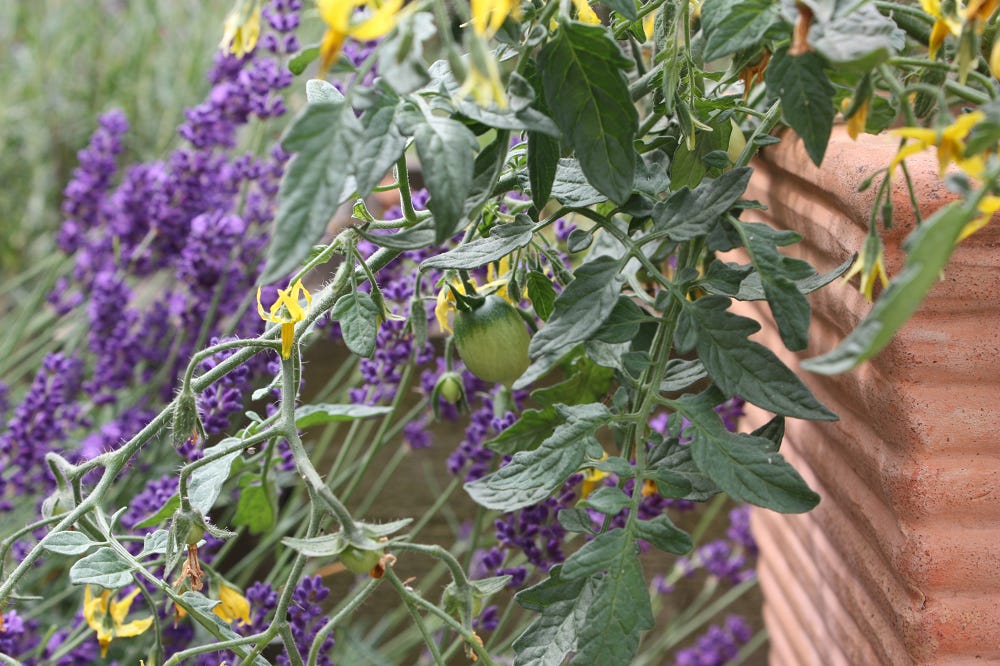There are lots of reasons to grow your own fruit and vegetables, and a compelling one is deliciousness! For large-scale farming and supermarket supply chains, the varieties grown are often not chosen for how good they taste – instead they may be chosen for how productive they are (their yield), how well they store, or numerous other factors relating to scale and efficiency.
Tomatoes are a good example of something that comes in many varieties, but often only a handful are available in shops. If you’re not someone who grows food, you might never have been told the name of a variety. The supermarkets often have a ‘cherry’, a ‘salad’ and perhaps a ‘vine-ripened’ tomato.
Once you start growing your own, you find there are many varieties available to grow from seed. They come in different colours and sizes, and there is also variety in flavour. Tomatoes might not be the simplest crop to grow, but I think they are one of the most rewarding – imagine yourself enjoying a juicy tomato, picked and eaten while still warm from the sun, and the most delicious tomato you’ve ever had!
I’d love to get to the point where we grow a variety of delicious and different tomatoes in the summer to eat fresh and have enough left over to preserve for winter cooking. I don’t think we’re going to get there this year, but we’ve made a start. I’m trying various tomato plants in the polytunnel and they seem happy in there, growing strong. We also have a few outside in various places: in the veg patch, among the flowers in the south-facing bed, and in a pot on the patio. The plants in the polytunnel are streets ahead, but we’ll see what happens now the weather is warmer. Varieties include Galina, Zuckertraube, Gardener’s Delight, and some interesting ones we were gifted, including Ananas Noire and Marmande.



Tomato plants need a bit of care and attention, although it depends on the type you grow. The easiest are ‘bush’ varieties, which are usually small tomatoes. Those (like the Tumbling Tom we have on the patio) are well suited for small spaces, hanging baskets and pots. They need regular watering, especially if they’re in a pot or basket that can quickly dry out in warm weather, but they don’t need a lot else.
Bigger tomatoes usually grow as ‘cordon’ varieties and these grow taller, and will need to be tied to a support. They also need a little tending as they grow to encourage them to produce tomatoes and not just grow and grow into an enormous plant. It’s important to pinch out the start of any sideshoots regularly. The plant will start to produce clusters of yellow flowers and each cluster is held on a stem called a ‘truss’. Once you have enough trusses, you want to stop the plant from growing any taller, so it uses its energy to make tomatoes. To do so, you cut off the top of the main stem. I’ve read that ‘enough’ trusses is seven for an indoor plant or four for an outdoor plant. I’m sure that’s not set in stone, but it seems a good rule of thumb.
I try to follow these guidelines, but a quick glance in the polytunnel right now would show you that I haven’t been completely on the ball with the pinching out and topping off! But still, a jungle of tomato plants is more fun to rummage among for ripe tomatoes.





